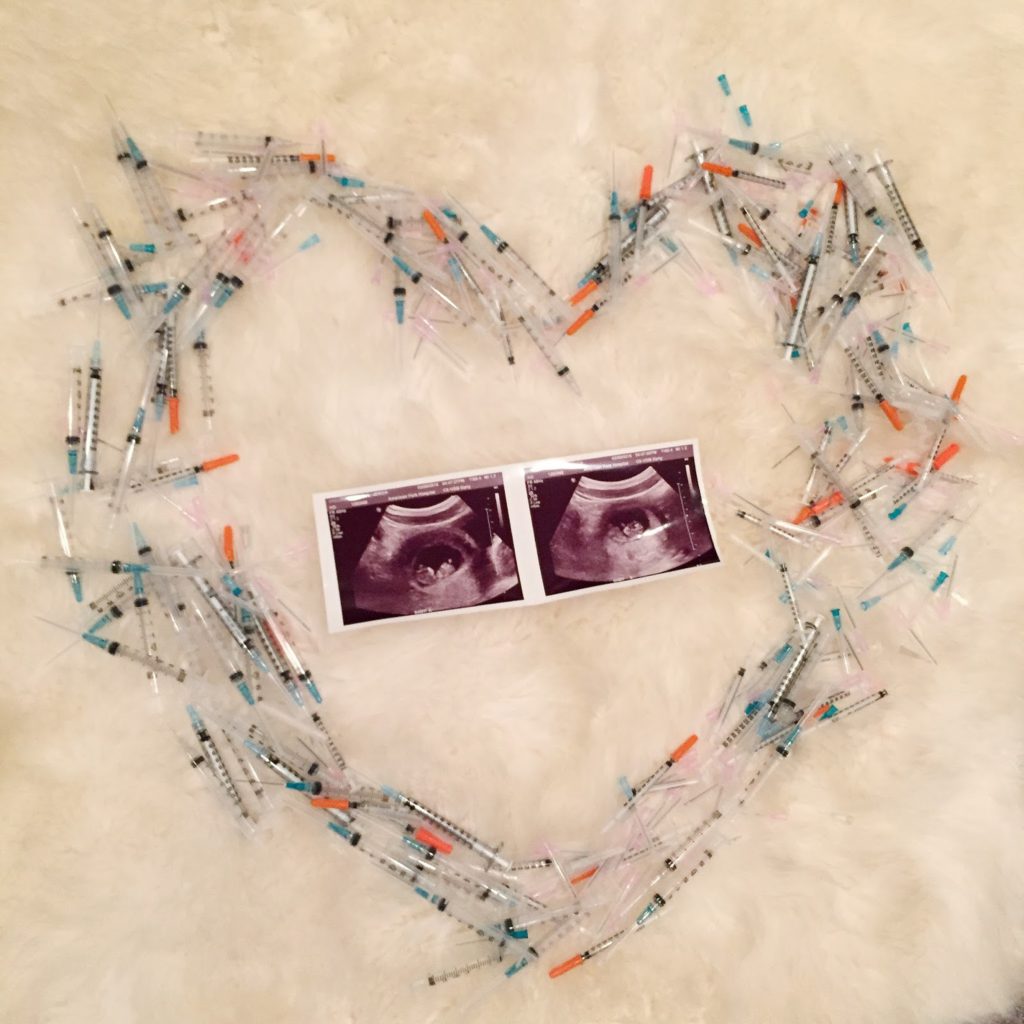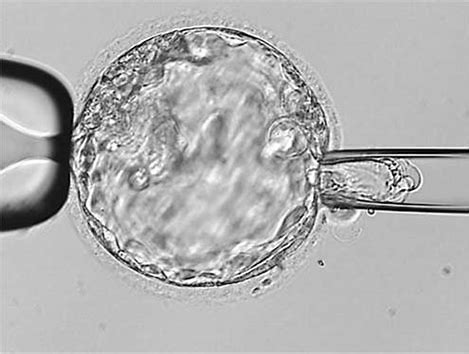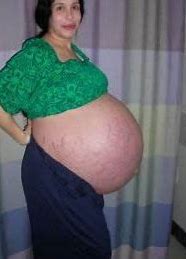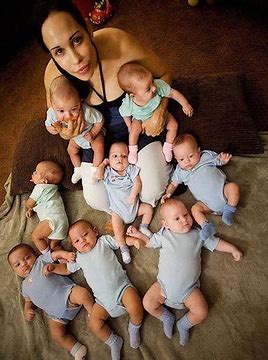Why “IVF” has people ‘seeing double’: The truth about multiple pregnancy and fertility treatments

As a fertility doctor in New York City, I spend most of my day speaking with patients about different options for fertility treatment. When the topic of IVF comes up, I am frequently met with looks of concern and anxiety. One of the major worries that tops the list is: “we don’t want to do IVF because we REALLY don’t want to have twins or triplets”.
Why do people associate IVF with twins? (Thanks, Octomom.)
In 2009, a 33 year-old woman named Nadya Suleman, aka “Octomom”, made headline news for giving birth to octuplets after her fertility doctor transferred 12 embryos into her uterus. No, that’s not a typo – TWELVE embryos. The American Society for Reproductive Medicine recommends implanting no more than 1 embryo in women under 35.
While this is an extreme case (and the doctor responsible has since lost his medical license), the transfer of MANY embryos at one time was commonplace in the early days of IVF. Here’s why:
When IVF was first developed in the 70s and 80s, success rates were VERY low – I’m talking in the single digits. As depressing as it sounds, it was a rare victory- a pleasant surprise- when IVF patients conceived. Transferring multiple embryos was considered a logical strategy to boost those feeble odds. Moreover, nobody knew how to freeze embryos well – there wasn’t a high degree of confidence, at the time, that frozen embryos would survive the thaw or retain their reproductive potential. After all the effort of injections, the time and money spent on an IVF cycle, it was viewed as wasteful to discard or then try and freeze additional embryos – why not just put them all in and make use of what you have?! Further justification stemmed from the fact that in those early days of IVF, embryo were transferred very early – 1 to 3 days after an egg was fertilized. This was because nobody felt confident about being able to consistently culture, or grow, embryos to day 5 or 6 after fertilization. There is a lot of drop off in human reproduction – only about 60% of fertilized eggs make it to day 5. So if you’re transferring a day 2 or 3 embryo, it makes sense to put back multiple embryos to make up for the fact that almost a third to a half are practically guaranteed to stop growing before having a chance to implant. Nowadays, labs are much better at ‘growing’ embryos to day 5, so a lot of that attrition takes place in the lab, rather than after the transfer.
To summarize – old-school IVF used to involve the transfer of MANY embryos at a time because:
- IVF was really inefficient with low success rates
- We didn’t know how to freeze embryos well
- Embryos were transferred at a very early stage- a stage beyond which lot of embryos are expected to die off before they have a chance to implant.
As lab techniques and success rates gradually improved, so did the rate of twins and triplets. Throw one-too-many Octomom type reality shows into the mix, and IVF’s reputation for increasing the risk of multiple pregnancy was cemented.
Why are twins ‘BAD’?

Parents of twins, or people who are twins themselves, often get a little insulted when they hear doctors refer to having twins as a RISK. It is true, no OBGYN/pediatrician/perinatologist WANTS you to get pregnant with more than 1 baby at a time – and it isn’t personal! Sure, twins are cute and efficient (one and done for anyone who only wants 2 kids!) but they come with a TON of possible risks – to both mom and baby. Preterm delivery occurs in ~60% of twins and ~90% of triplets. Twins are thought to be 4 times more likely to have cerebral palsy, a common neurological complication of premature birth and are often have lower birthweight and require admission to the neonatal ICU and prolonged stay in the hospital after delivery. There’s also a long list of potential risks to women who carry more than one fetus: high blood pressure, diabetes, hemorrhage at time of delivery, and need for a c-section, to name just a few examples. The costs of multiple pregnancy are high – to the health of the children, their mothers, and to society. Recognizing the risks and burdens of multiple pregnancy, our field has made a major push towards reducing its incidence.
Where do twins/triplets come from?

It’s important to mention that NOT ALL twins/triplets are coming from fertility treatments. Embryos split in utero, spontaneously, leading to monozygotic, or identical, twins. This was the case in the amazing story of identical triplets, separated at birth, that was the basis for the documentary “Three Identical Strangers” (click here to listen to a CNN Podcast where I chat with Dr. Sanjay Gupta about the movie and the rise of multiple pregnancy). Occasionally, a woman can also ovulate more than one egg, or supraovulate, naturally – leading to dizygotic, or fraternal, twins. The baseline rate of spontaneous twins has not really changed overtime. What HAS changed, is the use of fertility treatments to help women conceive – and with that we have the rise of multiple pregnancy.
In fertility treatment, multiple pregnancy can arise from:
- IVF
- Transfer of more than 1 embryo (something we can control)
- A transferred embryo spontaneously splits into identical twins (not something we can predict or control) – affects 1-3% of embryo transfers
- Supraovulation – this involves taking pills or injections to release/ovulate more than 1 egg for women who normally don’t ovulate regularly themselves, or to increase the odds of pregnancy in women who ovulate regularly (ie. unexplained infertility).
- Pills (ie. clomid, letrozole) have ~3-8% risk, depending on your age (egg quality), and the number of follicles releasing eggs (response to treatment)
- Injections (I hardly EVER use this) tend to have a much higher risk of multiple pregnancy (~10-20%)
NEWSFLASH: The majority of twins that come from most Fertility Clinics these days are coming from supraovulation, NOT IVF.
New and Improved: Major advances that are reducing the rate of IVF twins

Over the past 4 decades, A LOT has changed in the IVF laboratory and clinic. We have learned how to:
- ‘flash freeze’, or vitrify, embryos – so we can reliably save the extra embryos to be transferred later, knowing that we aren’t causing them to be damaged or have a lower chance of pregnancy.
- confidently grow embryos in the lab to or past day 5 of development, where cells start to separate out into the parts of the embryo that become the baby vs. the placenta… this means we can now safely take away a few placental cells without hurting the embryo, in order to…
- genetically test embryos to identify which are healthy and contain the right amount of DNA (46 chromosomes) – this helps us to select an embryo for transfer that has odds that are actually IN FAVOR of pregnancy and a healthy live birth.
This was a total gamechanger!
All of this means, we have gone from the old school, imprecise methods (putting back multiple embryos, without knowing their potential, and hoping 1 will stick) to a much safer, well controlled approach – selecting a single, healthy embryo to transfer, which has a high chance of resulting in a live birth. In most clinics that have adapted these cutting edge technologies and practices, the proportion of transfers involving just a single embryo has risen to well above 95% and the incidence of multiple pregnancy from IVF is becoming exceedingly rare. Our goal as fertility doctors is to help women conceive ONE healthy baby, ONE at a time.
One of my missions is to help destigmatize the treatments and advances that are available to help patients build their family. I see the fear of complications and the burdens of twins/triplets as a real barrier to patients wanting to openly discuss and learn about their treatment options. Yes, IVF should not be taken lightly– it is an undertaking, an expense, a major decision to take on – but one thing is for sure – its association with high risk, multiple pregnancies no longer stands and should be removed as a major factor when weighing the risks vs. benefits.
My name is Lucky Sekhon and I'm a double board-certified OBGYN, and Reproductive Endocrinologist & Infertility specialist practicing at RMA of New York. My mission is to empower women with practical and scientifically accurate information to make the right fertility decisions for themselves.
Follow me on Instagram to keep up to date with my fertility related posts and content.



